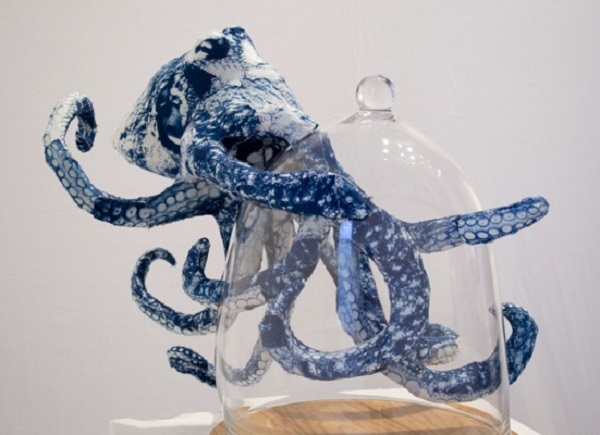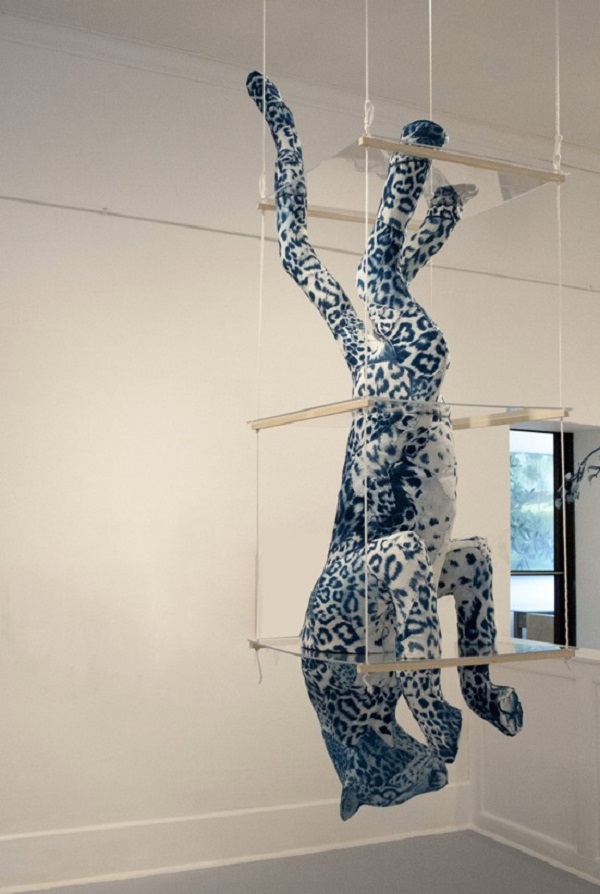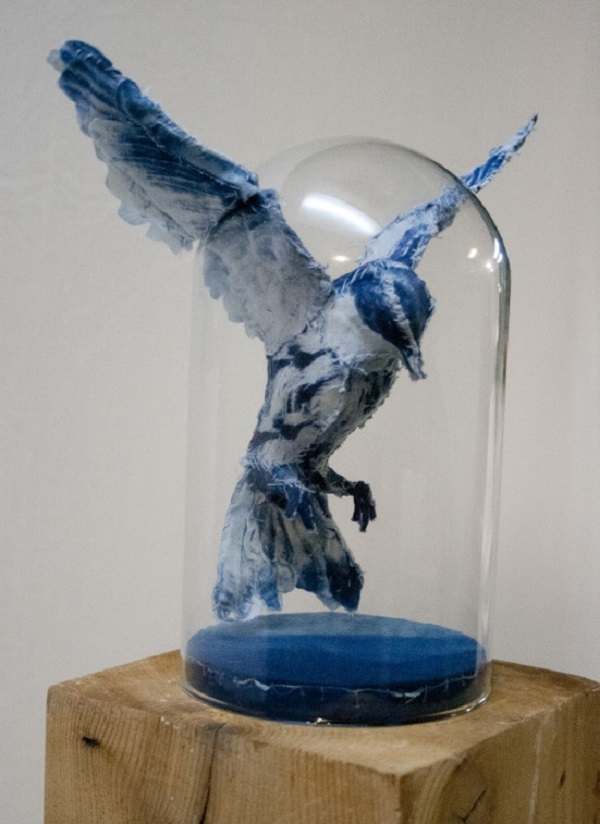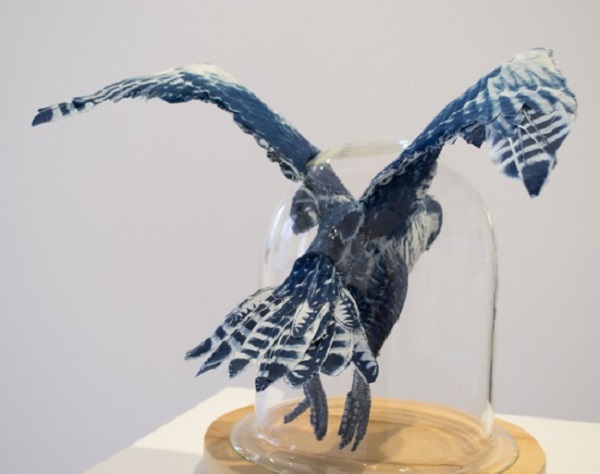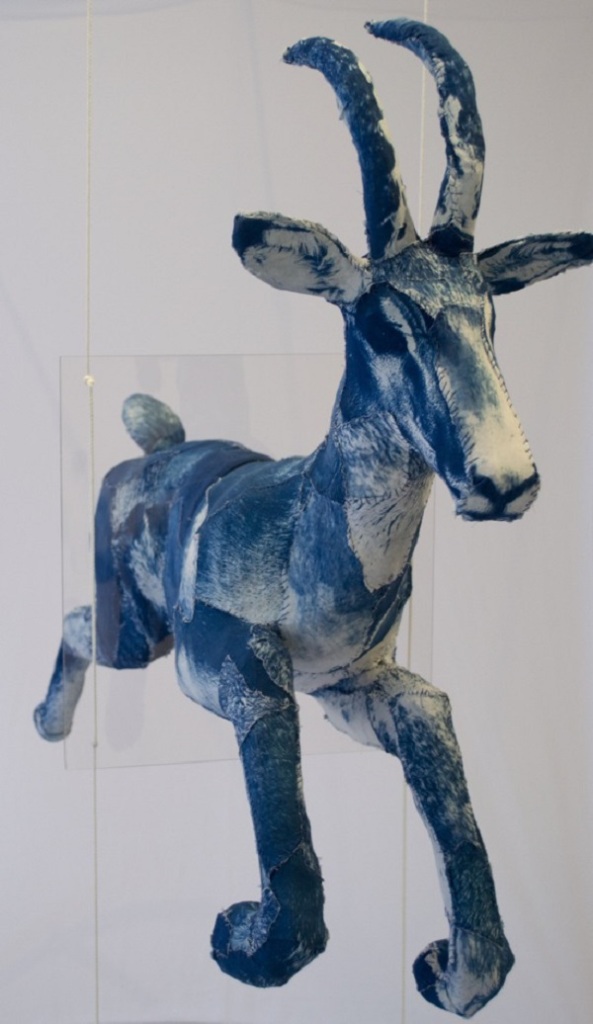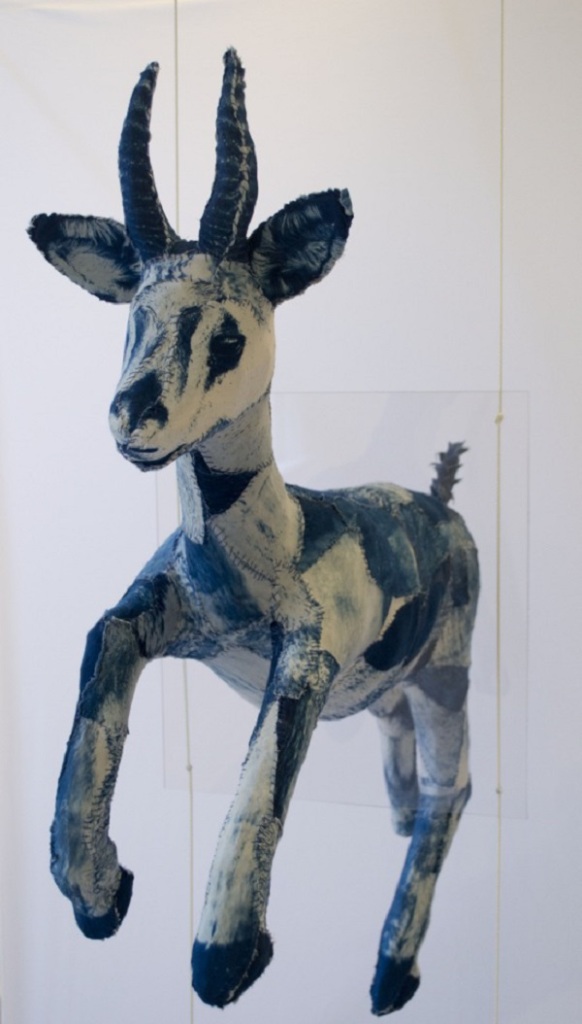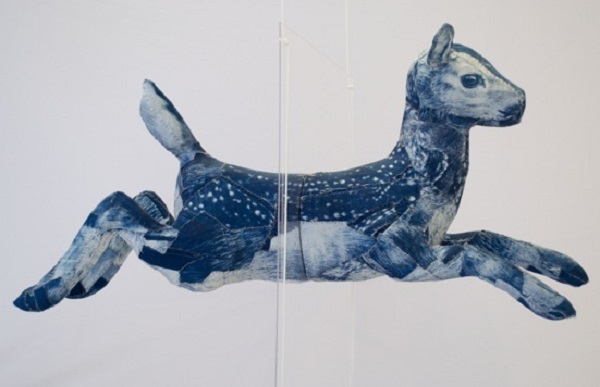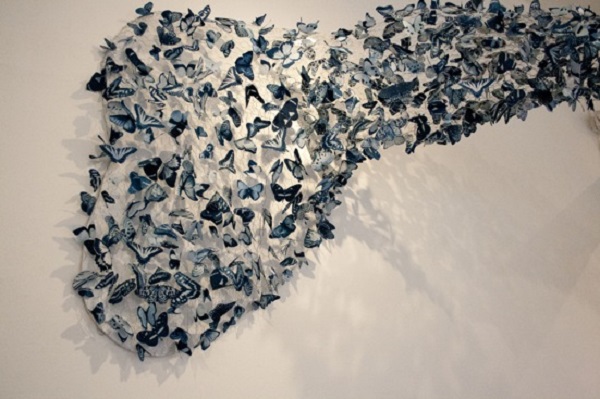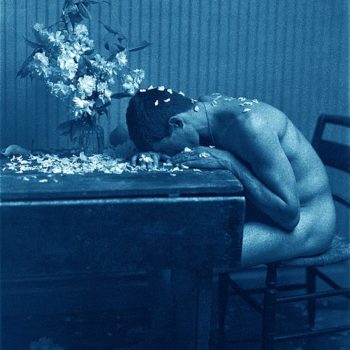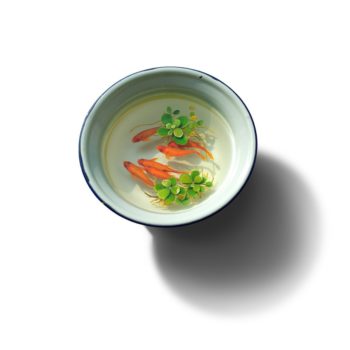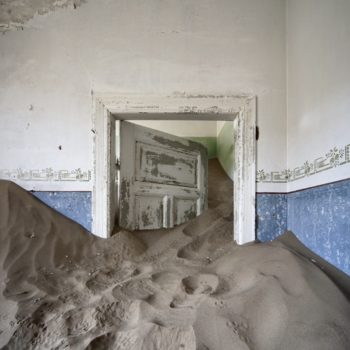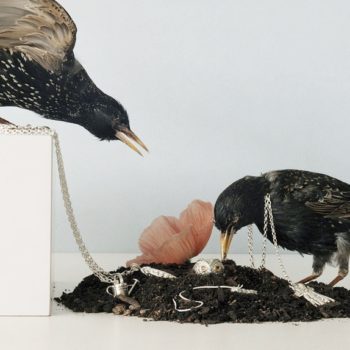The work of Tasha Lewis stands out from any other photography, fiber, and “taxidermy” art you may have seen before. Lewis patches cyanotype-coated fabric together to construct sculptures of animals arrested during a surge of forward momentum. When exhibited, the work incorporates high-powered magnets to create the illusion that the animals are breaking through the glass cases and domes that encase them. I truly admire Lewis’s practice. There’s virtue in the amount of labor that goes into creating each piece, and in the artist’s shrugging the anatomically correct. There are few naturally blue things found on the earth, and while the cyanotype’s inherent blue tone does refer broadly to the elemental sea and sky, it also makes the animals appear frozen literally as well as figuratively. I enjoy the combination of kitschiness (see plush/knitted taxidermy mounts available for sale today), one of the earliest photography processes, and age-old handwork.
While at the same time incredibly unique, I think Lewis’s pieces reference much of the art that came before them. These pictures have me thinking about some qualities of the work of other artists I’ve featured–the momentum and intensity of Cai Guo-Qiang’s taxidermy art installations; the mass of the creatures, sometimes warranting a piecework effect, depicted in Carrie Witherell’s cyanotypes, and the laborious, hand-stitched aspect of Mister Finch‘s animal creations. Lewis’s work also brings to mind pieces by Mia Mulvey, and of course Maurizio Cattelan.
From the artist’s statement: My current work is focused on re-imagining taxidermy and other methods of preserving life. My interest in preservation stems from my fascination with the re-presentational powers of photography. I am fascinated with how we as viewers relate to a leaf that has been mechanically produced to look and feel very similar to a real leaf. I have been scaling up that idea to make animal bodies, tree limbs, and I hope to eventually create whole environments. I am in dialogue with moments from the nineteenth century: the popularization of the photograph, the creschendo for big game hunting, and a certain nostalgia and interest in cataloging (Cabinet of curiosities, Wunderkammer etc.) Although I tap into these older sources for my work, the actual execution is dependent on today’s technologies.
From “Moments of Thaw”
From “The Herd”
From “Naturae Curiosa”
From the exhibition “Moments of Thaw” at The Harrison Center
Visit artist's site: tashalewis.info
Posted February 12th, 2015

